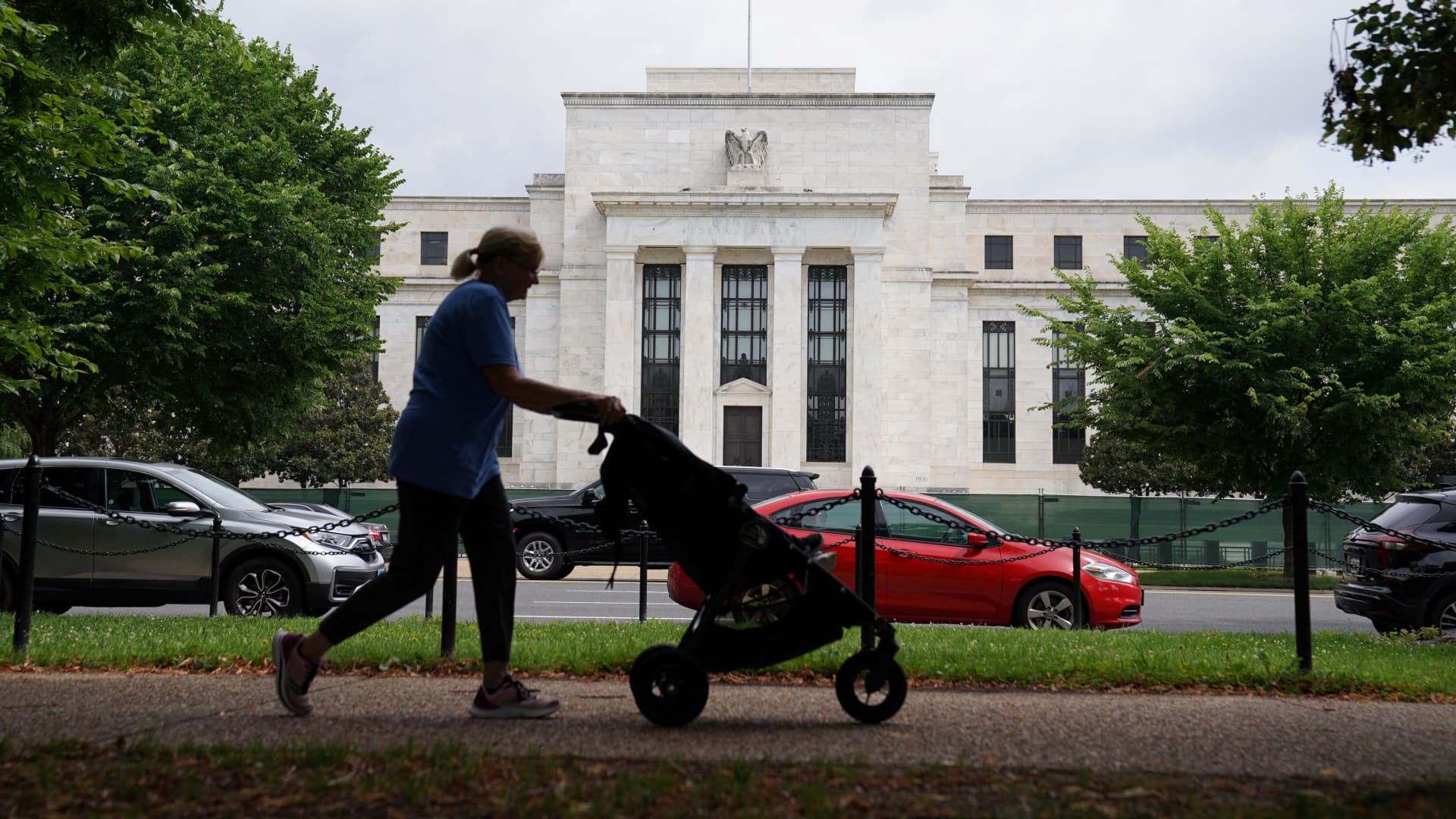After more than a year of consistently increasing rates, the Federal Reserve decided to maintain its target federal funds rate on Wednesday. However, this offers little relief for households who continue to face high borrowing costs. Economist Tomas Philipson predicts that rates will not decrease and, in fact, borrowing costs are likely to climb even higher in the second half of the year. Fed officials anticipate two quarter percentage point increases before the end of 2023.
Since March 2022, the central bank has raised its benchmark rate 10 consecutive times, resulting in a targeted range of 5%-5.25%, the fastest pace of tightening since the early 1980s. While inflation has started to cool, it still remains above the Fed’s target of 2%. Simultaneously, borrowers are experiencing higher costs on credit cards, student loans, and other types of debt.
The federal funds rate, determined by the central bank, influences the interest rate at which banks overnight lend and borrow from one another. Although consumers do not directly pay this rate, the Fed’s decisions impact the borrowing and savings rates they encounter daily. The current benchmark rate is the highest since August 2007.
Here is how the federal funds rate affects consumers:
1. Credit cards: As the federal funds rate increases, the prime rate and credit card rates follow suit. Currently, credit card annual percentage rates are at an all-time high of over 20%. With higher prices causing financial strain, more individuals carry credit card debt from month to month.
2. Home loans: Although 15-year and 30-year mortgage rates are fixed, inflation and the Fed’s policies have reduced purchasing power for prospective homebuyers. The average rate for a 30-year fixed-rate mortgage is near 6.7%, relatively high compared to a year ago.
3. Auto loans: While auto loans are typically fixed, rising interest rates and increased car prices result in larger payments for borrowers buying new cars. The average rate for a five-year new car loan is now the highest since 2010.
4. Student loans: Federal student loan rates are fixed, only impacting new borrowers. However, undergraduate students taking out new direct federal student loans will experience a rate increase to 5.50% as of July. Existing federal education debt continues to benefit from a 0% rate until the payment pause ends.
5. Savings accounts: Although the Fed does not directly influence deposit rates, they tend to correlate with changes in the target federal funds rate. Savings account rates at large retail banks have increased to an average of 0.4%, while online savings account rates have reached over 5%.
Overall, despite the Federal Reserve’s decision to maintain the federal funds rate, borrowers can expect borrowing costs to continue rising. It is crucial for households to carefully manage their finances and make informed decisions in this environment of high borrowing costs.
Denial of responsibility! VigourTimes is an automatic aggregator of Global media. In each content, the hyperlink to the primary source is specified. All trademarks belong to their rightful owners, and all materials to their authors. For any complaint, please reach us at – [email protected]. We will take necessary action within 24 hours.


